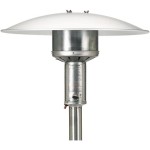How to Paint a Cement Patio Floor: A Comprehensive Guide
Painting a cement patio floor is a cost-effective and visually appealing way to revitalize an outdoor living space. A fresh coat of paint can transform a dull, cracked, or stained patio into a vibrant and inviting area for relaxation and entertainment. This process requires careful planning, preparation, and execution to ensure a durable and long-lasting finish. This article outlines the necessary steps to paint a cement patio floor effectively.
Key Point 1: Preparation is Paramount for a Lasting Finish
The success of any painting project hinges significantly on the quality of the preparation. A poorly prepared surface will lead to premature paint failure, resulting in chipping, peeling, and an overall unsatisfactory outcome. Thorough cleaning and surface repair are essential for achieving a professional and durable finish on a cement patio floor.
Cleaning the Cement Patio Floor
The initial cleaning phase involves removing all loose debris, dirt, and organic matter from the patio surface. This can be accomplished using a stiff-bristled broom or a leaf blower. Pay particular attention to corners and crevices where debris tends to accumulate.
Following the initial sweep, a more intensive cleaning is required to remove embedded dirt, stains, and efflorescence (a white, powdery salt deposit that forms on concrete surfaces). This can be accomplished using a pressure washer. When using a pressure washer, ensure the nozzle is set to a wide fan pattern to avoid damaging the concrete surface. Hold the nozzle approximately 12-18 inches away from the surface and work in overlapping strokes.
For stubborn stains, such as oil or grease, a concrete degreaser may be necessary. Apply the degreaser according to the manufacturer's instructions and scrub the affected area with a scrub brush. Rinse thoroughly with water.
If efflorescence is present, it can be removed using a solution of muriatic acid diluted in water. Always follow the manufacturer's safety precautions when handling muriatic acid, including wearing gloves, eye protection, and a respirator. Apply the solution to the affected area, scrub with a scrub brush, and rinse thoroughly with water. Neutralize the acid residue with a solution of baking soda and water before rinsing again.
Repairing Cracks and Damage
Before painting, any cracks or damage to the cement patio floor must be repaired. Small cracks (less than ¼ inch wide) can be filled with a concrete patching compound. Clean the crack thoroughly and remove any loose debris. Apply the patching compound according to the manufacturer's instructions, using a putty knife to force the compound into the crack. Smooth the surface and allow it to dry completely before sanding it smooth.
Larger cracks and spalled areas require more extensive repair. Remove any loose or crumbling concrete from the damaged area. Apply a concrete bonding agent to the prepared surface. Mix a concrete repair mortar according to the manufacturer's instructions and apply it to the damaged area, ensuring it is level with the surrounding surface. Allow the mortar to cure completely before sanding it smooth.
Etching the Concrete Surface
Etching the concrete surface creates a slightly rough profile, which improves the adhesion of the paint. This is particularly important for smooth or sealed concrete surfaces. Etching can be accomplished using a concrete etching solution, typically a diluted muriatic acid solution. Follow the manufacturer's safety precautions when handling these chemicals.
Apply the etching solution to the concrete surface according to the manufacturer's instructions. Allow the solution to sit for the recommended amount of time, typically 10-15 minutes. Rinse the surface thoroughly with water to remove all traces of the etching solution. Neutralize the acid residue with a solution of baking soda and water before rinsing again. Allow the surface to dry completely before proceeding to the next step.
Key Point 2: Selecting the Right Paint and Primer
Choosing the appropriate paint and primer is critical for achieving a durable and aesthetically pleasing finish on a cement patio floor. The paint must be specifically formulated for concrete surfaces and capable of withstanding outdoor conditions, including temperature fluctuations, moisture, and UV exposure. The primer serves as a bonding agent between the concrete and the paint, improving adhesion and preventing peeling.
Types of Paint for Cement Patio Floors
Several types of paint are suitable for cement patio floors, each with its own advantages and disadvantages:
Acrylic Latex Paint: This is a versatile and widely available option that offers good durability and resistance to fading. Acrylic latex paint is water-based, making it easy to clean up and low in volatile organic compounds (VOCs). It is suitable for patios that are not subject to heavy traffic or excessive moisture.
Epoxy Paint: Epoxy paint is a two-part system that provides excellent durability and resistance to abrasion, chemicals, and moisture. It is a good choice for patios that are subject to heavy traffic or exposure to harsh conditions. Epoxy paint can be more challenging to apply than acrylic latex paint and may require specialized equipment.
Concrete Stain: Concrete stain penetrates the concrete surface, creating a translucent color that enhances the natural texture of the concrete. It is a good option for those who want a more natural look. Concrete stain is less likely to chip or peel than paint, but it may not provide as much protection against stains and moisture.
Elastomeric Paint: Elastomeric paint is a flexible coating that can bridge small cracks and prevent water from penetrating the concrete surface. It is a good choice for patios that are prone to cracking or water damage. Elastomeric paint is typically more expensive than other types of paint.
Selecting the Right Primer
A concrete primer is essential for promoting adhesion between the concrete surface and the paint. Choose a primer that is specifically formulated for use on concrete and compatible with the type of paint you have selected. An acrylic latex primer is a good choice for use with acrylic latex paint, while an epoxy primer is recommended for use with epoxy paint.
Apply the primer according to the manufacturer's instructions, using a brush, roller, or sprayer. Ensure the primer is applied evenly and completely covers the concrete surface. Allow the primer to dry completely before applying the paint.
Key Point 3: Applying the Paint for a Professional Finish
The application of the paint requires careful attention to detail to ensure a smooth, even, and durable finish. Following the manufacturer's instructions and using the appropriate tools and techniques are essential for achieving a professional-looking result.
Choosing the Right Application Tools
The most common tools for applying paint to a cement patio floor are brushes, rollers, and sprayers. The choice of tool depends on the type of paint, the size of the patio, and personal preference.
Brushes: Brushes are useful for painting edges, corners, and other hard-to-reach areas. Choose a high-quality brush with synthetic bristles for use with latex paint and a natural bristle brush for use with oil-based paint.
Rollers: Rollers are ideal for painting large, flat surfaces quickly and efficiently. Choose a roller with a nap length that is appropriate for the texture of the concrete surface. A shorter nap roller is suitable for smooth surfaces, while a longer nap roller is better for rough surfaces.
Sprayers: Sprayers can be used to apply paint quickly and evenly, particularly on large patios. Choose a sprayer that is designed for use with the type of paint you have selected. Airless sprayers are a good option for applying paint to concrete surfaces.
Applying the Paint
Before applying the paint, stir it thoroughly to ensure the pigment is evenly distributed. If using a sprayer, thin the paint according to the manufacturer's instructions.
Begin by painting the edges and corners of the patio with a brush. This is known as "cutting in." Then, use a roller or sprayer to paint the remaining surface. Apply the paint in thin, even coats, overlapping each stroke slightly to avoid leaving any gaps or streaks.
Allow the first coat of paint to dry completely before applying a second coat. Two coats of paint are typically required to achieve adequate coverage and durability. Follow the manufacturer's recommended drying time between coats.
Curing and Maintenance
After applying the final coat of paint, allow it to cure completely before exposing the patio to traffic or furniture. Curing times vary depending on the type of paint and the environmental conditions. Refer to the manufacturer's instructions for the recommended curing time.
To prolong the life of the painted patio floor, clean it regularly with a mild detergent and water. Avoid using harsh chemicals or abrasive cleaners, as these can damage the paint. Reapply a fresh coat of paint every few years to maintain its appearance and protect the concrete surface.

How To Paint A Concrete Porch Or Patio
:max_bytes(150000):strip_icc()/faux-painted-rug2-5d0d2b1a8ddd4c60a39ffd329840874e.jpg?strip=all)
15 Painted Concrete Patio Designs

How To Paint A Porch Floor With Concrete The Honeycomb Home
:max_bytes(150000):strip_icc()/painted-concrete-patio-1-2cb8e70c07074006b34800edbf090eba.jpg?strip=all)
15 Painted Concrete Patio Designs

How To Paint A Concrete Porch Or Patio

How To Paint A Porch Floor With Concrete The Honeycomb Home
:max_bytes(150000):strip_icc()/cement-tile-1-of-1-683x1024-f5a283b105e04abf8729e7390f9148bc.jpg?strip=all)
15 Painted Concrete Patio Designs

How To Paint A Concrete Porch Or Patio

10 Painted Concrete Patio Floor Ideas So Much Better With Age

Before And After Painted Concrete Patio Thistlewood Farm
Related Posts








